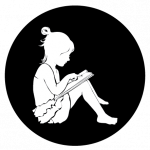PMNH

The Palestine Museum of Natural History
Environmental Effects of the Occupation
While Palestinians are as a people under constant threat and assault from the occupation, the environment around them, and on which they rely, bears similar attack. The Palestine Museum of Natural History and Palestine Institute of Biodiversity and Sustainability understand the connections between these abuses and work to research and counter their effects. Here’s what you need to know and what you can do so that together we can rise up.
Join us for the first Kumi Now online session with Dr. Mazin Qumsiyeh, director of the Palestine Museum of Natural History, and other special guests on Tuesday, June 2, at 6:00 PM East Jerusalem, Palestine time (UTC+3). You can register to be part of the Zoom conference call on the Kumi Now Online page. You can also watch from our Facebook page, and a replay will be available in the coming days here, on the Kumi Now Online Archives page, and on our YouTube account.
Organization
The Palestine Museum of Natural History (PMNH) and the Palestine Institute of Biodiversity and Sustainability (PIBS) work to research, educate about, and conserve our natural world, culture, and heritage and use knowledge to promote responsible human interactions with our environment.
Our goals are to:
- Explore and research the diversity of the fauna, flora, and human ethnography via collections and research
- Foster environmental protection and responsible interaction between people and the environment
- Use the knowledge gained and the books, databases and collections to promote science education
- Catalog and build a physical and an electronic database of all animal and plant species existing
- Develop respect a) for ourselves (self empowerment), b) for our fellow human beings (regardless of background), and c) for all living creatures on our shared earth
You can find PMNH and PIBS on their website at https://www.palestinenature.org. Or find them on Facebook at https://www.facebook.com/Palestine-Museum-of-Natural-History-1454309858180882/ or Twitter at https://twitter.com/PalMNH. Professor Mazin Qumsiyeh, the founder of PMNH and PIBS, has a blog at http://popular-resistance.blogspot.co.il/ and maintains Qumsiyeh: A Human Rights Web at http://qumsiyeh.org/home/. You can find him on Twitter at https://twitter.com/mazinq or on Facebook at https://www.facebook.com/mazin.qumsiyeh.9.
Topic
In the late 19th century, Palestine had some 1,300 native villages and towns, most going back thousands of years and living in harmony with nature. This structure radically shifted after the First Zionist Congress in 1897 with mostly European Jews migrating and taking over the land. The destruction of an ancient way of life included destruction of more than 500 villages and towns and their land primarily re-cultivated with European pine trees which damaged the local environment. When the West Bank and Gaza came under Israeli rule in 1967, more destruction followed with Israeli colonial settlements now housing 800,000 Israelis in the occupied Palestinian territory. The Palestinian environment has been traumatized by the uprooting of native trees, construction of settlements, building of the apartheid wall, military activities, industrial settlements, and the engineering of water projects that divert water from the Jordan Valley and underground aquifers.
“It’s a Zionist paradox. We came here to redeem a land and we end up contaminating it.” Alon Tal, Founder of the Israel Union for Environmental Defense
Mega-Projects and Destruction of Native Habitats
Early Zionist “pioneers” in the first half of the 20th century destroyed many local trees (figs, almonds, olives etc.) and this reached its peak in what was called an environmental “Nakba” (catastrophe) in 1948-1949. The destroyed village lands were cultivated by imported European pine trees, creating amonoculture. This had a devastating impact on landscape and biodiversity. These trees were also susceptible to frequent fires. In the 1950s, the nascent state of Israel also destroyed the Hula Wetlands, a major site of bird migration and habitat to many local fauna and flora. Hundreds of species disappeared. Additionally, Israeli planners diverted waters from the upstream sources of the Jordan River Basin to the coastal areas for political reasons. This initiated the destruction of the Jordan Valley and the drying-up of the Dead Sea and resulted in huge negative environmental impacts. To make things worse, Israeli planners are now working with Jordan on a Red Sea toDead Sea canal that will destroy Wadi Araba and the coral reef areas of the Red Sea.
Colonial Settlements
Every aspect of colonial infrastructure building brought with it substantial environmental impacts. Residential settlements are usually built on hilltops, with little or no regard to environmental impact or even dealing with their waste. Separate infrastructure is built to link settlements creating infrastructure redundancy (decaying roads for Palestinians and wide highways for Israelis). Industrial settlements dump their toxic waste and release polluted air near remaining Palestinian communities. At the Barqan industrial zone there are factories working with aluminum, fiberglass, plastics, and other industries that produce extensive pollutants. The Special Rapporteur found that “the industrial wastewater that flows untreated to the nearby valley damages agricultural land belonging to the neighbouring Palestinian villages of Sarta, Kafr al-Dik, and Burqin, polluting the groundwater with heavy metals.” There are at least six other industrial zones. Forcing Palestinians to take alternative roads around settlements and walls also creates delays, increases vehicle emission, and causes health effects. Settlements also bring with them settler violence. Settler violence has uprooted and burned thousands of trees, mainly olives, on which Palestinians depend.
The Apartheid Wall
The building of the apartheid wall has fractured and fragmented both the human and natural environments. It separates people from their fields and water sources while destroying ecosystems and restricting animal grazing, hunting lands, and paths of migration.
By placing the path of the wall deep within the West Bank, Israel has captured land with abundant water sources and most fertile agricultural areas along with much of the forested area in an otherwise arid landscape. But this created unlivable conditions in the remaining Palestinian areas with significant environmental issues (e.g. fragmenting habitats for wild animals). The clearing of land for the wall has meant the uprooting of 1.5 million fruiting trees.
Military Use
The Israeli military’s environmental impact includes restricting access to vast areas and also use o live ammunition exercises as well as dumping toxic waste (including nuclear and chemical waste). By closing off large areas of the West Bank for military facilities and exercises, the military has also forced Palestinians to overgraze what little land remains to Palestinian herders. This overgrazing has resulted in the loss of vegetation cover and thus soil erosion, with the endgame being desertification.
Water Usage
Palestinian water usage has been governed by Israeli law and military action since 1948 and in the West Bank and Gaza since 1967. Currently,91% of the water in the occupied West Bank is illegally (per international law) taken by Israel. The remaining Palestinians (those not made refugees) end up using less than what the World Health Organization recommends as enough for healthy living.
Waste Disposal
In addition to waste and runoff from Israeli settlements, industrial areas, and military facilities, Israel imposes more waste on the occupied territory by trucking in waste from other parts of the country. For example, solid waste generated by West Jerusalem is discarded at an unsanitary dump site near Abu Dis. And, according to PCBS, “In 2005, the number of uncontrolled solid waste dumping sites increased from 89 to 161 in the West Bank, none of which were subject to any monitoring or control by Palestinian Ministry of Health or other authorities.”
Gaza
The UN reported that Gaza will be unlivable by 2020. Some two million people (two-thirds of them refugees and more than one million children) are squeezed into an open air, semi-arid prison under blockade and denied their internationally recognized rights (to water, to freedom of movement, to most imports and exports). It is environmentally devastating and is considered a slow genocide.
This is only a basic outline of how the occupation, through its many incarnations, has a negative effect on the environment and on native people in general. The situation is clearly unsustainable, and the question becomes: What is to be done?
Story
Raja Shehadeh
“The final section of the path that brought me down to the valley was narrow and overgrown with spiky shrubs. I forced my way through, scratching my skin until the path veered to the right. The walls diverged. I continued on the open path parallel to the valley. I was fanned by the soft breeze that was blowing across this open green area. To my left stretched tall grass and olive trees luxuriating in the deep rich soil. I walked along, passing the gully between the next two hills. The valley here was at its widest. Winding their way between the terraces were flocks of sheep roaming on the sides of the hills like pale yellow ribbons. I looked for the shepherd and saw that he was about to play his reed pipe. I stopped and sat on a rock for a while to listen to his pastoral tunes. Then I began walking again, trying to move as quietly as possible.
I soon got to that part of the wadi which always inspired talk when I walked with Jonathan Kuttab, my colleague in human rights at Al Haq in 1981. Far away from town, next to the dry stream between the hills, we would sit on the rock, our feet dangling in the grass…We talked of what lay ahead for us. We had both read the settlement master plan drawn up by the Jewish Regional Council in the West Bank in cooperation with the Settlement Department of the World Zionist Organization. According to this plan 80,000 Israeli Jews were to be settled in our hills by 1986 in twenty-five settlements and twenty outposts. To make this possible two billion US dollars were to be allocated. Tons of concrete were to be poured over these hills. The plan called for paving roads at a rate of 150 kilometres a year. Every year 500 dunums (a dunum is 1,000 sq metres) of industrial zones would be developed…
The plan viewed our presence here as a constraint and aimed at preventing our ‘undesirable development’. By creating new human settlements where none existed, connecting them with roads, and isolating existing ones, it would not only strangle our communities but also destroy this beautiful land, and in a matter of a few years change what had been preserved for centuries.”
From Palestinian Walks: Notes on a Vanishing Landscape by Raja Shehadeh
Action
The Palestine Museum of Natural History does amazing work, and deserves your support. Help it out by doing one (or more!) of the following:
- Run a quick fundraising drive and send a contribution to the museum at https://www.palestinenature.org/donations/.
- The Palestine Museum of Natural History is very close to well-known tourist destinations such as Rachel’s Tomb and Banksy’s Walled-Off Hotel. But it receives much less traffic. If you or someone you know is visiting Palestine, and specifically Bethlehem, add the museum to your itinerary: https://goo.gl/maps/qGyw9wwYSoL2
- And if you aren’t planning such a visit, you can help others find it. Contact a local travel agent or tour company and provide them information on the Palestine Museum of Natural History. Alternately, promote it online on a site like TripAdvisor.
Share news of your donation or advocacy for the museum on social media. Include a link to this page of the Kumi Now website along with the hashtags #KumiNow and #Kumi33.
Literature
“Only a major shift in moral reasoning, with greater commitment given to the rest of life, can meet this greatest challenge of the century. Wildlands are our birthplace. Our civilizations were built from them. Our food and most of our dwellings and vehicles were derived from them. Our gods lived in their midst. Nature in the wildlands is the birthright of everyone on Earth. The millions of species we have allowed to survive there, but continue to threaten, are our phylogenetic kin. Their long-term history is our long-term history. Despite all of our pretenses and fantasies, we always have been and will remain a biological species tied to this particular biological world. Millions of years of evolution are indelibly encoded in our genes. History without the wildlands is no history at all.”
From Half-Earth: Our Planet’s Fight for Life by Edward O. Wilson
“Until we have the courage to recognize cruelty for what it is… we cannot expect things to be much better in this world… We cannot have peace among men whose hearts delight in killing any living creature. By every act that glorifies or even tolerates such moronic delight in killing we set back the progress of humanity.”
Rachel Carson
Resources
Books:
- Popular Resistance in Palestine: A History of Hope and Empowerment by Mazin Qumsiyeh
- Sharing the Land of Canaan: Human Rights and the Israeli-Palestinian Struggle by Mazin Qumsiyeh
- “The Conflict and Sustainable Development”: http://qumsiyeh.org/chapter10/
Reports:
- “The Segregation Wall Impacts on Palestinian Environment” from Applied Research Institute – Jerusalem: https://www.arij.org/files/arijadmin/2016/The_Segregation_Wall_impacts_on_Palestinian_Environment.pdf
- “Status of the Environment in the State of Palestine 2015” from Applied Resetch Institute – Jerusalem: https://www.arij.org/files/arijadmin/2016/SOER_2015_final.pdf
- “The Environmental Impact of Israeli Settlements on the Occupied Palestinian Territories” by Sawsan Ramahi for Middle East Monitor: https://www.middleeastmonitor.com/wp-content/uploads/downloads/factsheets/the-environmental-impact-of-israeli-settlements-on-the-occupied-palestinian-territories.pdf
Articles
- “Israeli Violations Against the Palestinian Environment” by Dr. Jad Isaac https://www.fosna.org/files/fosna/CornerstoneIssue45.pdf
- “The Impact of the Israeli Occupation on Palestine’s Environment” by Simon Awad https://www.fosna.org/files/fosna/CornerstoneIssue45.pdf
- “’Agricultural terrorism’: Palestinian crops face destruction by Israeli settlers” by Yumna Patel for Middle East Eye: http://www.middleeasteye.net/news/agricultural-terrorism-palestinian-crops-face-destruction-israeli-settlers-1562802280
Videos:
- Scarred Lands & Wounded Lives: The Environmental Impacts of War: http://www.scarredlandsfilm.com/watch-feature-film/
- “Existence is Resistance: Occupation and the Environment” from Innovative Minds: https://youtu.be/EyFAzEvfx8o
Follow PMNH on Social Media











